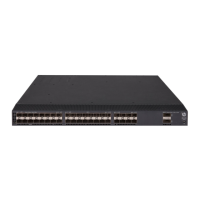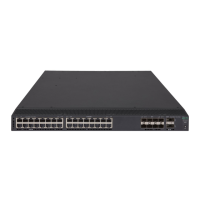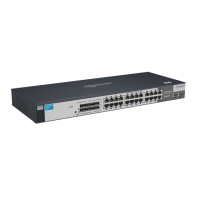125
Configuring a portal Web server
Perform this task to configure the following portal Web server parameters:
• URL of the portal Web server
• Parameters carried in the URL when the device redirects the URL to users
The device supports multiple portal Web servers.
To configure a portal Web server:
Ste
Command
Remarks
1. Enter system view.
system-view N/A
2. Create a portal Web server
and enter its view.
portal web-server server-name
By default, no portal Web server is
created.
3. Specify the URL of the portal
Web server.
url url-string By default, no URL is specified.
4. Configure the parameters to
be carried in the URL when the
device redirects it to users.
url-parameter param-name
{ original-url | source-address |
source-mac | value expression }
By default, no redirection URL
parameters are configured.
Enabling portal authentication on an interface
You must first enable portal authentication on an access interface before it can perform portal
authentication for connected clients.
When a portal-enabled interface receives a portal packet, it checks the source IP address information of
the packet. If the packet matches a locally configured portal authentication server, the interface regards
the packet valid and sends an authentication response packet to the portal authentication server.
Otherwise, the interface drops the packet. After a user logs in to the device, the user interacts with the
portal authentication server as needed.
Configuration restrictions and guidelines
When you enable portal authentication on an interface, follow these restrictions and guidelines:
• Make sure the interface has a valid IP address before you enable re-DHCP portal authentication on
the interface.
• Cross-subnet authentication mode (layer3) does not require Layer 3 forwarding devices between
the access device and the portal authentication clients. However, if a Layer 3 forwarding device
exists between the authentication client and the access device, you must use the cross-subnet portal
authentication mode.
• With re-DHCP portal authentication, HP recommends that you also configure authorized ARP on the
interface to make sure only valid users can access the network. With authorized ARP configured on
the interface, the interface learns ARP entries only from the users who have obtained a public
address from DHCP.
• An IPv6 portal server does not support the re-DHCP portal authentication mode.
• You can enable both IPv4 portal authentication and IPv6 portal authentication on an interface.

